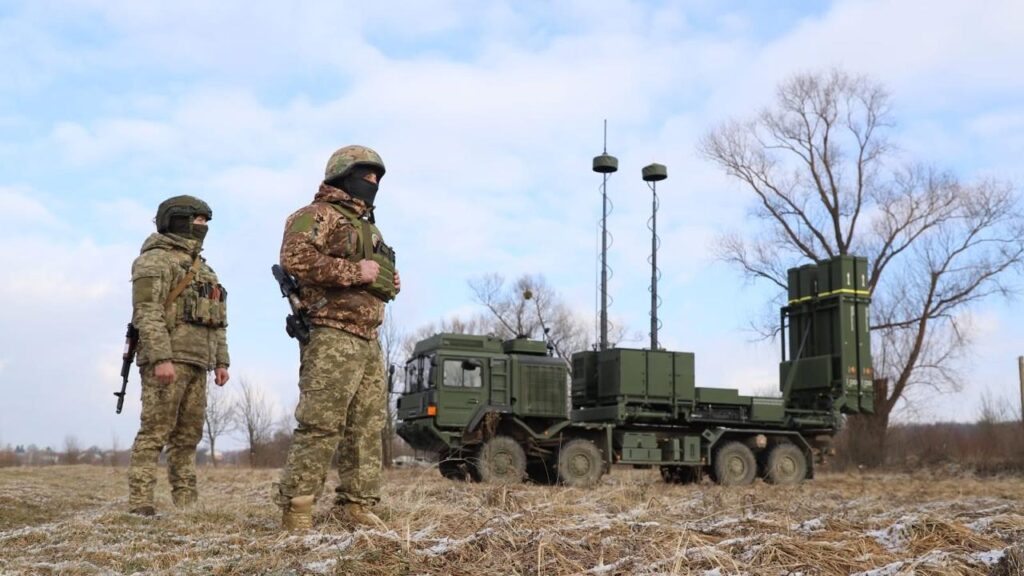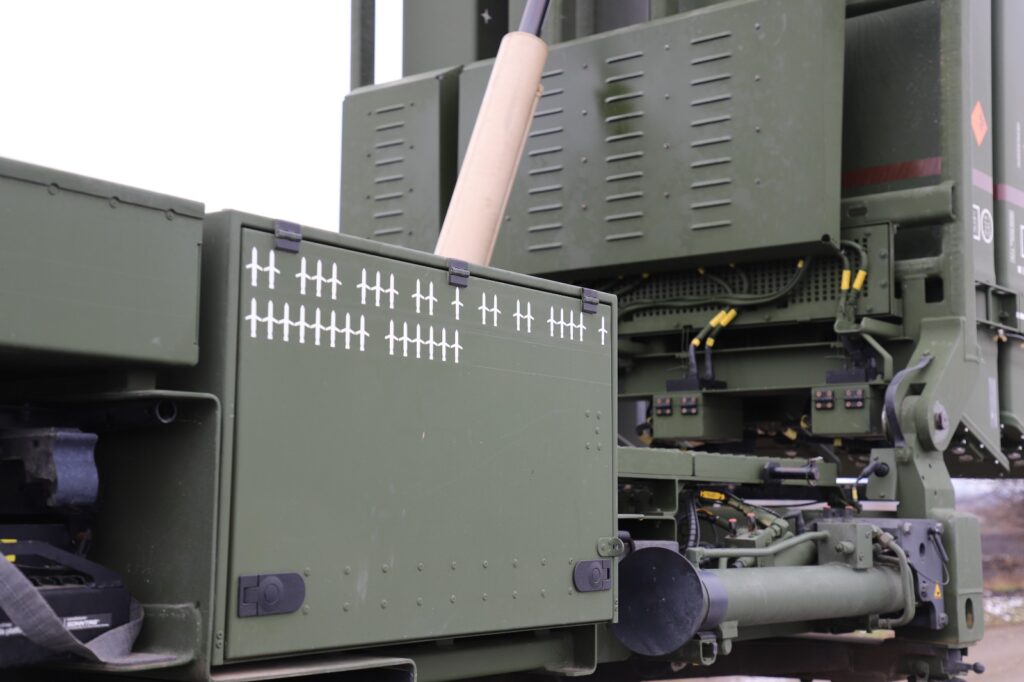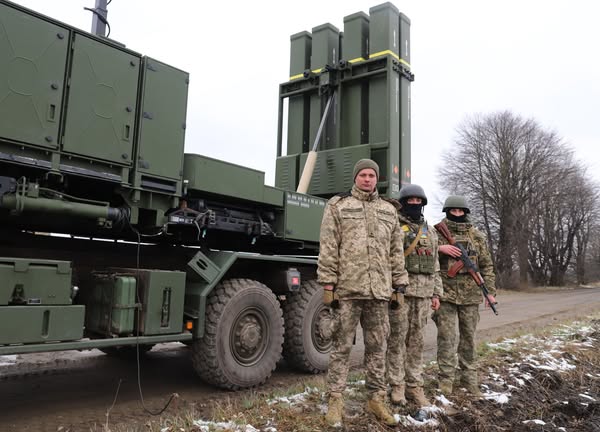Desperate to blunt escalating Russian bombardment of its cities, Ukraine contacted Germany with an urgent request four new air-defense systems and as many as 2,000 new missiles for them.
Germany responded with equal urgency—and said yes. Now Ukraine is set to receive four additional launchers for IRIS-T missiles as well as a huge stock of the 130-kg missiles, which range as far as 40 km under infrared and radar guidance.
The IRIS-T isn’t the kind of missile you’d shoot at an incoming ballistic missile. Ballistic missiles such as Russia’s Iskander move too quickly for smaller air-defense missiles. It takes a heavy missile in the class of the US-made Patriot to kill an Iskander.
What the IRIS-T is, is a drone-killer. In its primary role defending against slower and lower-flying targets—Russian Shahed drones and cruise missiles, for example—the IRIS-T has a nearly 100% success rate, according to Helmut Rauch, the CEO of Germany’s Diehl Defense, the lead manufacturer of the missile.

The Ukrainian 540th Anti-Aircraft Missile Brigade corroborated that figure. During one recent Russian cruise missile barrage, the brigade’s IRIS-T launchers shot down all 27 incoming missiles. “The enemy did not accomplish its mission,” a brigade officer said in an official video translated by German Aid to Ukraine and an associate.
Russian industry has ramped up production of the 200-kg Shahed and can now fling hundreds and hundreds of them at Ukrainian cities every day. Ukrainian forces jam their navigation signals, shoot them from the air and the ground and even ram into them with special interceptor drones—and yet, 10% or more of the Shaheds get through.
The devastating air raids targeting Ukrainian cities on 4 July involved 539 Shaheds, according to the Ukrainian air force. 268 Shaheds were shot down, and another 208 flew off course, likely owing to Ukrainian jamming. 63 Shaheds struck, damaging buildings and killing or wounding civilians.
“There must—and there definitely will—be more protection for life,” Ukrainian Pres. Volodymyr Zelenskyy said in the aftermath of the raid.
Yesterday, the 540th Anti-Aircraft Missile Brigade — which has just received the 7th IRIS-T SLM fire unit Germany has delivered to #Ukraine — has shared a video featuring IRIS-T SLM launchers, a TRML-4D air surveillance radar and an IRIS-T SLS launcher.
— German Aid to Ukraine (@deaidua) July 4, 2025
Thanks to @S1epanS, I'm… pic.twitter.com/GSKu2gt46o
No panacea
The new batch of IRIS-Ts will help, but they’re no panacea.
Reading between the lines of leaked documents that German newspaper Bild obtained, German Aid to Ukraine concluded new German Chancellor Friedrich Merz had already signed off on Ukraine’s request for four new IRIS-T launchers and 2,000 missiles. Each launcher costs $140 million. Each missile costs $600,000.
Ukraine already has seven IRIS-T launchers donated or financed by Germany and Norway. It has lost one launcher and one supporting TRML-4D radar to Russian action. Prior to the current request, Germany and Norway had pledged another 13 launchers.

The IRIS-T is on track to become one of Ukraine’s most important medium-range air-defense systems. It alone can’t fully protect Ukrainian cities, of course. For starters, it might take years for German industry to deliver all the launchers and missiles.
Moreover, even 2,000 missiles is a small number of missiles when Russia can launch many hundreds—potentially 1,000—of its $200,000 Shaheds every day. It’s not for no reason Ukrainian industry is working so hard on jammers that can throw the Russian drones off course—and also building more and more interceptor drones that cost less than a Shahed does.

The jamming might be the most cost-effective defense. “Since the enemy counts Shahed production at 500 to 1,000 per day, jamming is the only economically viable solution,” said “Alchemist,” the head of the Night Watch electronic warfare team in Kyiv.
With newer Shaheds climbing as high as 3,500 meters and flying right through heavy clouds that can obscure them from view, Ukraine’s interceptor drones “can’t keep up,” Alchemist claimed. “Cost, scalability, resources—all prohibit such countermeasures.”
Ideally, IRIS-T would be the final line of defense, plucking the last few Shaheds that make it through the jamming and interceptor drones.





